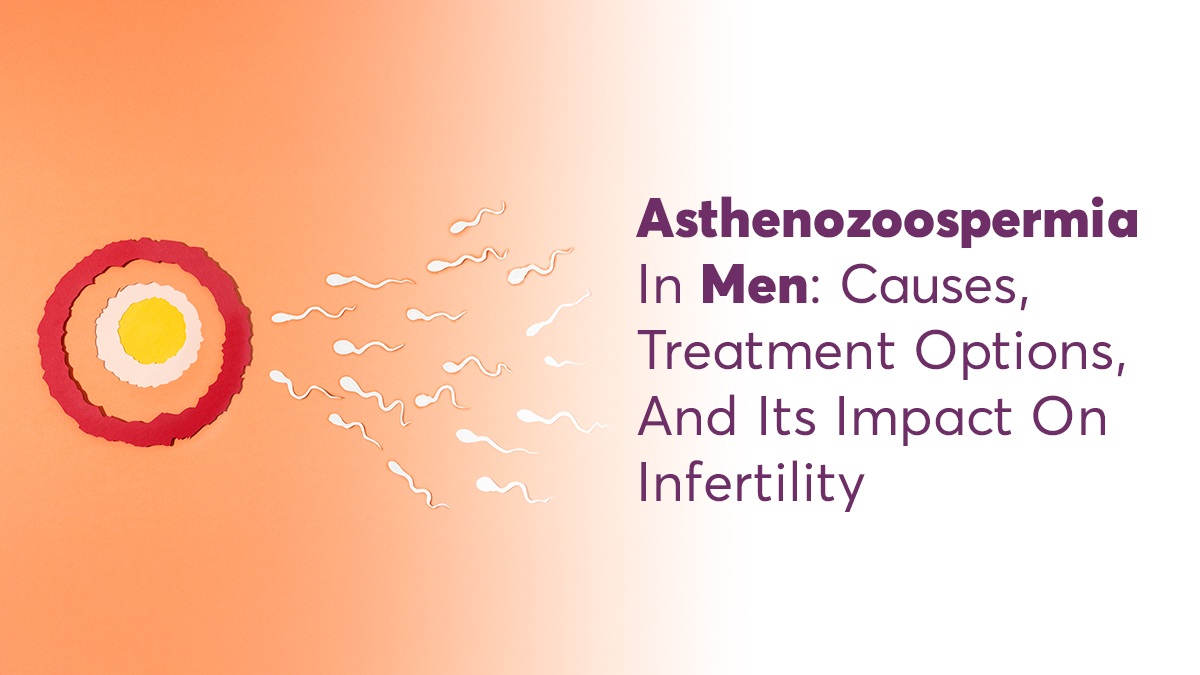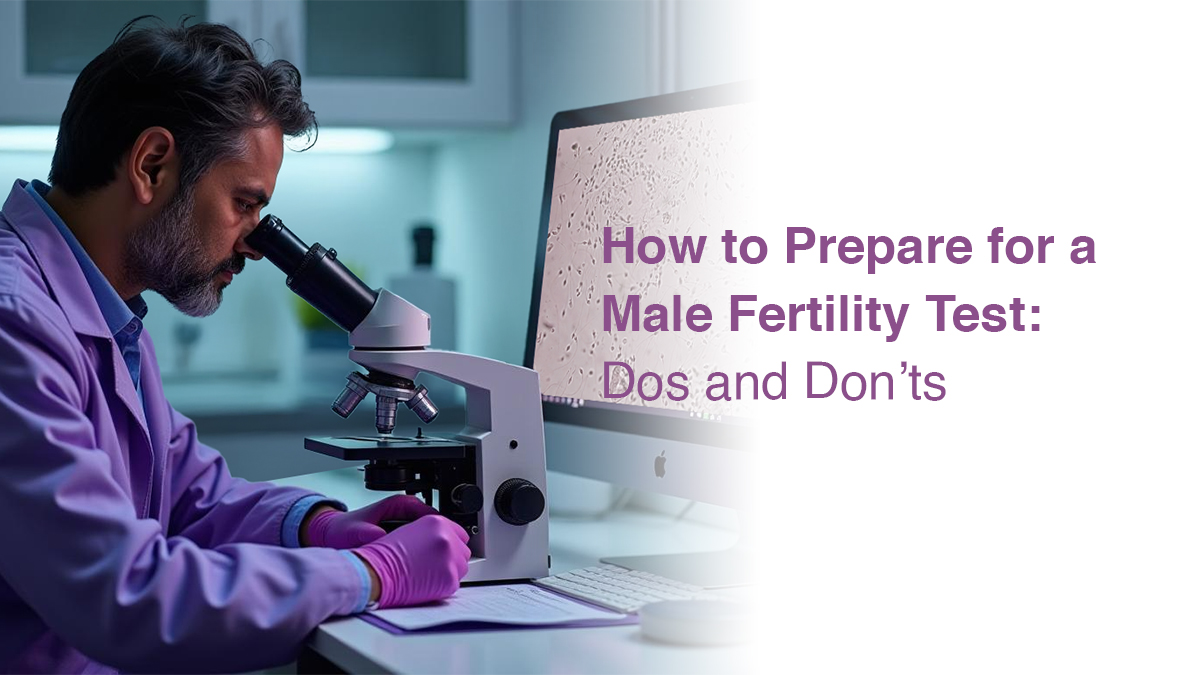
Asthenozoospermia In Men: Causes, Treatment Options, And Its Impact on Infertility

Male fertility plays an important role in the journey to conception, with sperm health being a crucial factor in successful fertilisation. Sperm needs to be of great quality with respect to count, shape and most notably, motility. There are numerous factors that can affect male fertility such as their lifestyle habits, environmental exposure and genetic conditions. One of the issues affecting sperm quality is Asthenozoospermia. Understanding this condition is crucial to deal with male infertility and finding optimal solutions.
What is Asthenozoospermia?
Asthenozoospermia is a male infertility issue featuring decreased sperm motility, impacting the capability to swim swiftly towards the egg. Motility is one of the main parameters that is examined to check male fertility in a standard semen analysis. Sperm motility is classified into progressive motility (sperm proceeding in a straight line or big circles) and non-progressive motility (sperm on the move in other patterns). Asthenozoospermia signifies a considerable decline in both kinds of motility.
Causes of Asthenozoospermia
There are numerous causes of Asthenozoospermia. Some of them are:
Inflammation:
Inflammatory diseases of the sperm duct, prostrate or any other reproductive organ can decrease sperm motility. The micro-organisms from these diseases can directly affect the sperm, slowing down its speed and the capability to penetrate the cervical mucus.
Varicocele:
Varicocele condition is characterised by the veins within the scrotum becoming enlarged. This is known to be one of the common causes of Asthenozoospermia.
Abnormal semen liquefaction:
Abnormal semen liquefaction decreases the space for sperm activity and reduces the movement of sperm.
Chromosome abnormalities:
Peculiarities of sex chromosomes can not only impact sperm quantity but also affect the mobility of sperm, thereby raising the chances of infertility.
Immunological Factors:
Antisperm antibodies hinder sperm activity in numerous ways. Research has suggested that the existence of anti-sperm antibodies around the sperm tail dissuades its capability to penetrate the cervical mucus.
Lifestyle and Environmental Factors:
Some unhealthy habits can significantly impact the motility of the sperm. For instance, smoking, excessive drinking and use of drugs can cause the condition. Moreover, men with high body weight and having occupational exposures to high temperatures are at a higher risk of developing Asthenozoospermia.
How Asthenozoospermia Affects Male Fertility
Characterised by decreased sperm motility, Asthenozoospermia can considerably affect male fertility by restricting the sperm’s capability to swim successfully toward the egg, which is vital for conceiving naturally. In this condition, the sperm may move slowly or immobile, thereby making it challenging for them to navigate the reproductive tract and reach the egg. This decrease in motility reduces the likelihood of fertilisation, particularly while conceiving naturally, as the sperm struggles to finish the journey via the cervix, uterus and fallopian tubes.
Diagnosing Asthenozoospermia
Asthenozoospermia can be diagnosed via an in-depth semen analysis, where a sample of semen is gathered and assessed for numerous parameters, including sperm motility. A microscope is utilised to evaluate the percentage of progressively motile sperm and the overall motility of the sperm.
Treatment Options for Asthenozoospermia
Asthenozoospermia treatment options depend on the underlying cause. Here’s what you can do to improve the sperm motility:
Lifestyle Changes:
If you can adopt a healthy lifestyle by quitting smoking, limiting alcohol consumption, consuming a balanced diet and regular exercise, it has the potential to significantly enhance sperm motility.
Medical Treatments:
Medications focus on dealing with the underlying causes and boosting sperm motility. Hormone therapy may be suggested if hormonal imbalances are signified. Antibodies can treat infections that add to low motility, while antioxidant supplements may help battle oxidative stress that impacts sperm health. Moreover, medicines that can augment blood flow or decrease inflammation could help with the functioning of the sperm, depending on the cause.
Assisted Reproductive Technologies (ART)
Techniques such as intrauterine insemination (IUI) have the sperm placed directly into the uterus to raise the probability of reaching the egg. In more severe cases, intracytoplasmic sperm injection (ICSI) during in vitro fertilisation (IVF) can prove to be highly successful as it involves injecting one healthy sperm directly into the egg, avoiding the need for motility. ART can considerably raise the probability of conception for men affected by Asthenozoospermia.
Coping with Asthenozoospermia
Dealing with Asthenozoospermia can be emotionally challenging. Look for guidance from a fertility specialist as they can offer a clear understanding of your condition, discuss potential Asthenozoospermia treatment options, and offer realistic expectations. Counselling and support groups can be helpful resources for coping with feelings of disappointment, anxiety or frustration. Joining a support group lets you bond with others facing similar issues, which can decrease feelings of isolation.
When to Seek Medical Advice ?
Couples need to consider visiting a doctor if they have been trying to get pregnant for a year with no success or if the female partner is over 35, as decreased sperm motility can be a factor. Early diagnosis can help deal with underlying causes and boost the probability of a successful conception via targeted Asthenozoospermia treatment options.
Conclusion
Asthenozoospermia is a condition that can considerably affect male fertility. Comprehending its causes, symptoms, diagnoses, and treatment options is important for those who are facing fertility issues. Experts, such as those at Oasis Fertility, are prepared with the right skills and tools to detect the condition early and make sure you receive timely treatment as well as offer advice on improving sperm motility. Be sure to visit an Oasis Fertility Clinic near you immediately. You can also explain your concerns on the live chat or call 1800-3001-1000 to avail more information.
FAQs on Asthenozoospermia
Can I get pregnant with Asthenozoospermia?
Yes, pregnancy can happen even with Asthenozoospermia. You can undergo treatments such as IVF with ICSI to improve your chances.
What is a normal count for Asthenozoospermia?
You suffer from Asthenozoospermia when less than 40% of sperm demonstrates normal motility in a semen sample.
What is the difference between Oligospermia and Asthenozoospermia?
Oligospermia is diagnosed when you have a low sperm count, while you suffer from Asthenozoospermia when you have reduced sperm motility.
Can I get pregnant with 40% sperm motility?
How are sperm motility and fertility connected? Yes, 40% motility is typically within the range for conceiving naturally, but other factors are also known to play a role in fertility.


fill up the form to get a
Free Consultation
Avail 0% interest on EMI
All Procedures | No Upper Limit
How we reviewed this article:
- Current Version
- January 3, 2025 by Oasis Fertility






